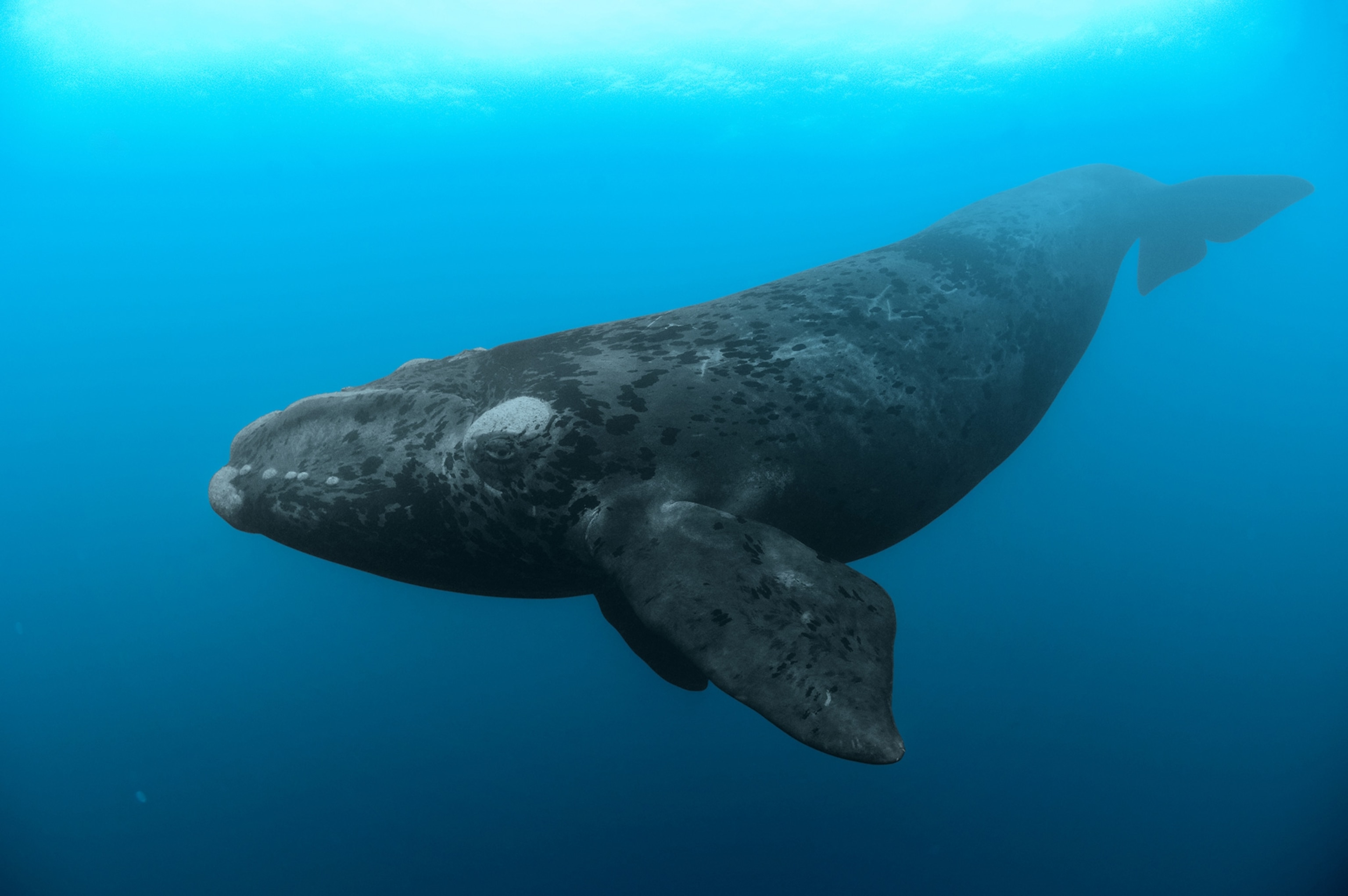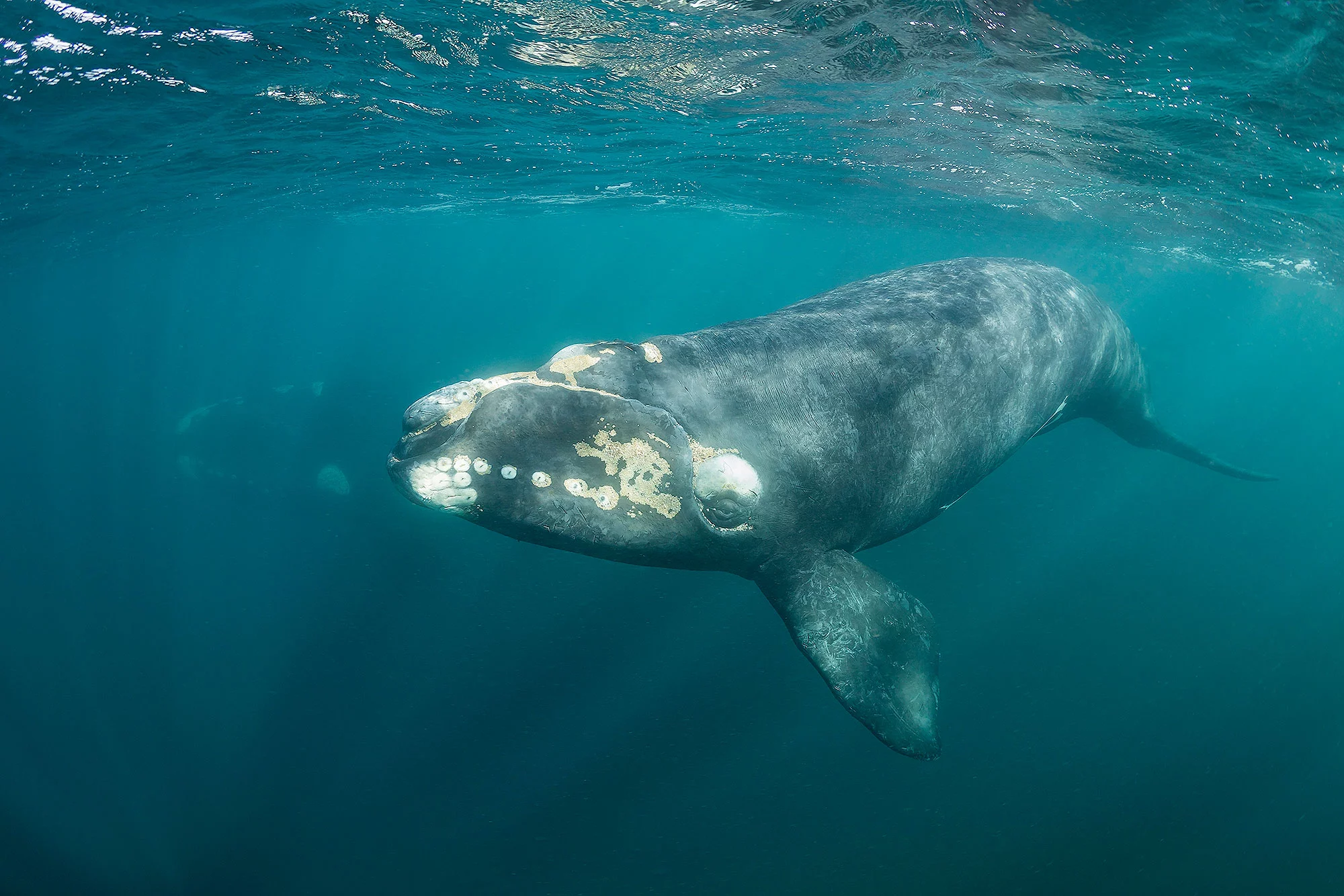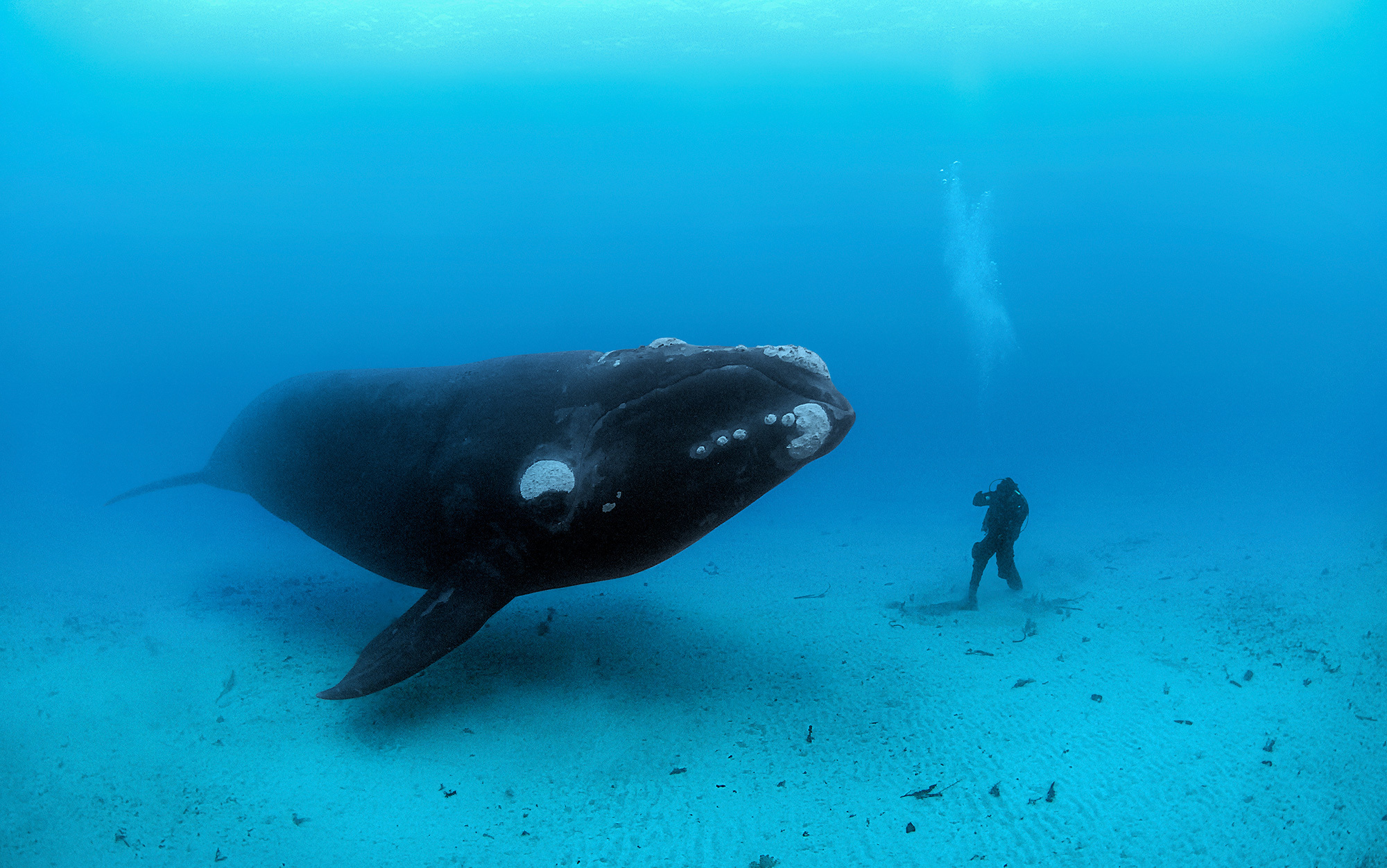





 North Atlantic right whales primarily occur in Atlantic coastal waters on the continental shelf, although they also are known to travel far offshore, over deep water. Right whales migrate seasonally and may travel alone or in small groups. |
 Their preferred prey consists of mostly pelagic crustaceans, like krill and copepods. |

|
North Atlantic right whales have stocky black bodies with no dorsal fins, and their blow spouts are shaped like a "V" Their tails are broad, deeply notched, and all black with a smooth trailing edge. Their bellies may be all black or have irregularly shaped white patches. Pectoral flippers are relatively short, broad, and paddle-shaped. Calves are about 14 feet at birth and adults can grow to lengths of 52 feet.
North Atlantic right whales have been listed as endangered under the Endangered Species Act since 1970. Researchers estimate there are fewer than 400 North Atlantic right whales, with fewer than 100 breeding females left. The number of new calves born in recent years has been below average.
North Atlantic right whales primarily occur in Atlantic coastal waters on the continental shelf, although they also are known to travel far offshore, over deep water. Right whales migrate seasonally and may travel alone or in small groups. In the spring, summer, and into fall, many of these whales can be found in waters off New England and further north into Canadian waters, where they feed and mate.